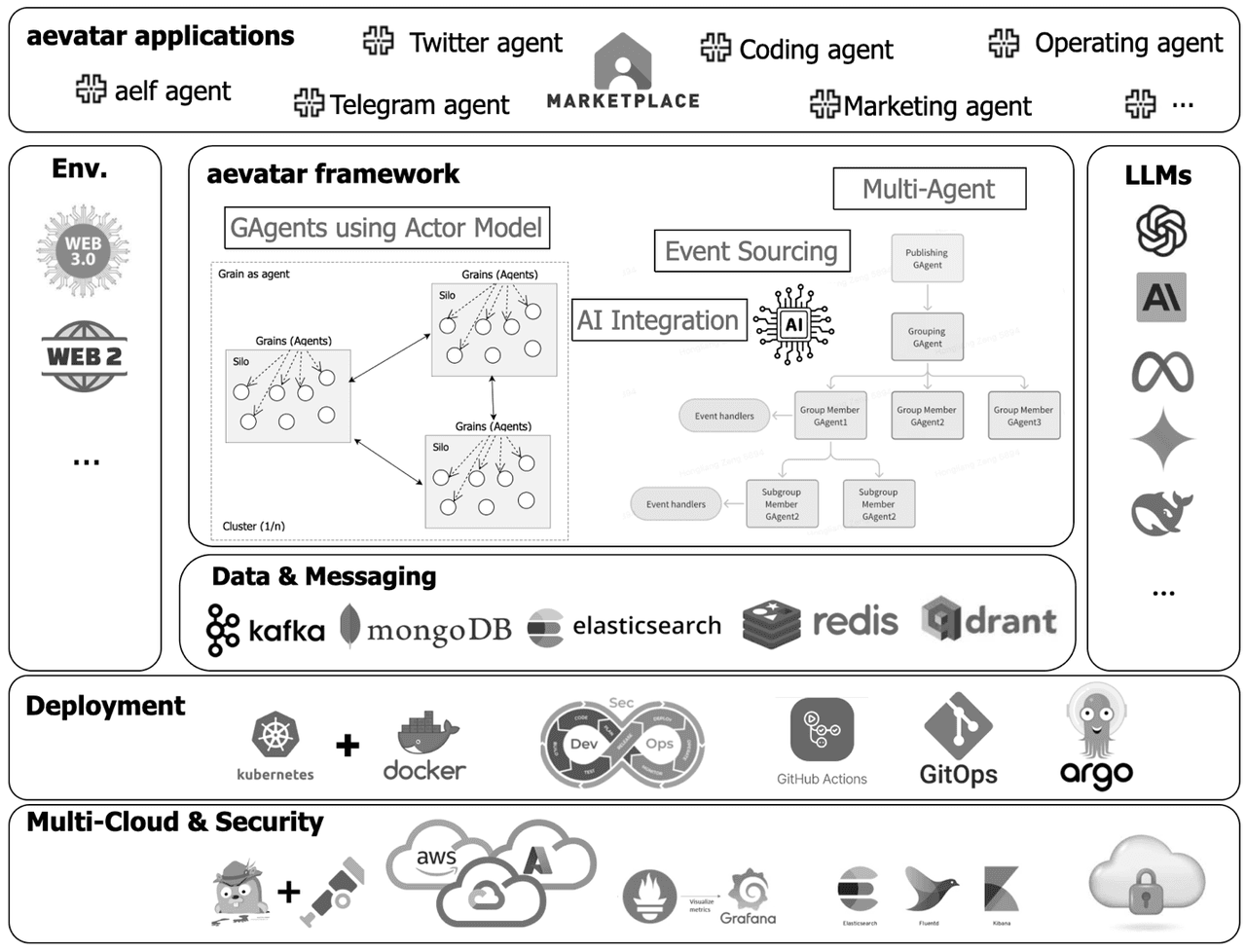Technology stack
aevatar.ai to facilitate collaborative problem-solving through a network of autonomous agents, enabling organizations to enhance decision-making processes, improve workflow efficiency, and provide intelligent automation across various business applications. It integrates advanced technologies like .NET 9, C#, CQRS, and Orleans Event Sourcing to establish a robust infrastructure for the operation of multiple intelligent agents. The system can be applied in diverse sectors including finance, healthcare, supply chain management, and customer service, where it optimizes tasks and allows for seamless interactions among specialized agents.

Implementation Approach#
This design document details a Multi-Agent system architecture built on .NET 9, C#, CQRS, ABP, Orleans Event Sourcing and other technologies. The system supports multiple intelligent agents working collaboratively to handle complex tasks, with high scalability, availability, and real-time response capabilities.
Technology Selection #
.NET 9 & C#: The latest .NET platform provides high-performance runtime and modern C# language features, supporting asynchronous programming and high concurrency processing.ABP Framework: Offers a modular, DDD-friendly framework structure that simplifies enterprise application development.Orleans: Microsoft's virtual Actor framework provides an ideal implementation pattern for Agents in distributed systems, supporting state management and fault tolerance.Event Sourcing & CQRS: Event sourcing preserves all system state changes, while CQRS separates read and write operations, improving system performance and scalability.Semantic Kernel: Microsoft's AI orchestration framework simplifies LLM integration and management.Multiple LLMs: Integrates various large language models to provide diverse intelligent capabilities.Data Storage: - MongoDB: Stores event logs and document data
- Elasticsearch: Provides full-text search functionality
- Redis: Caching and publish/subscribe functionality
- Qdrant: Vector database supporting semantic search
Kafka: High-throughput distributed messaging system used for the event busKubernetes & GCP: Provides container orchestration and cloud infrastructureSignalR: Implements real-time communication functionalityArchitectural Challenge #
Agent Collaboration Mechanism: Multiple intelligent agents need to collaborate efficiently, involving task allocation, result aggregation and conflict resolution.Event Sourcing and CQRS Integration: Requires designing efficient event processing workflows to ensure system consistency.Multi-LLM Orchestration: Different LLMs have varying capabilities and performance characteristics, requiring intelligent selection and orchestration.Distributed System Challenges: Involves data consistency, fault tolerance and scalability issues.Real-time Communication: Requires low-latency Agent interaction and user feedback.Solution Approach#
Implement Agents using the Orleans Actor model, where each Agent is a stateful virtual ActorUse event sourcing to record system changes, ensuring auditability and state recoveryOptimise read/write performance based on the CQRS pattern, separating command and query responsibilitiesLeverage Semantic Kernel to manage and orchestrate multiple LLM capabilitiesAdopt DDD design principles to ensure system architecture aligns with the business domainUse Kafka as an event bus to ensure high-throughput message processingDeploy on Kubernetes to ensure system resilience and scalabilityEdited on: 3 March 2025 06:28:36 GMT+0
